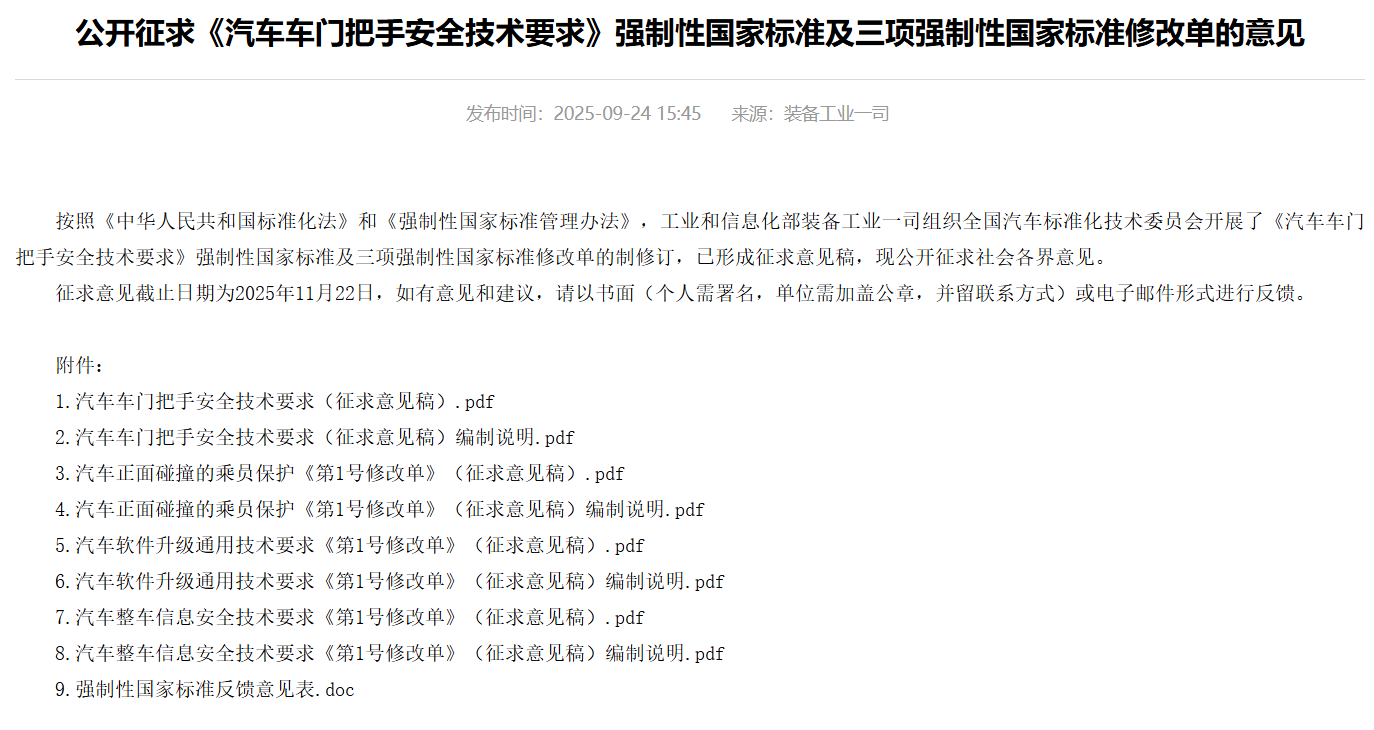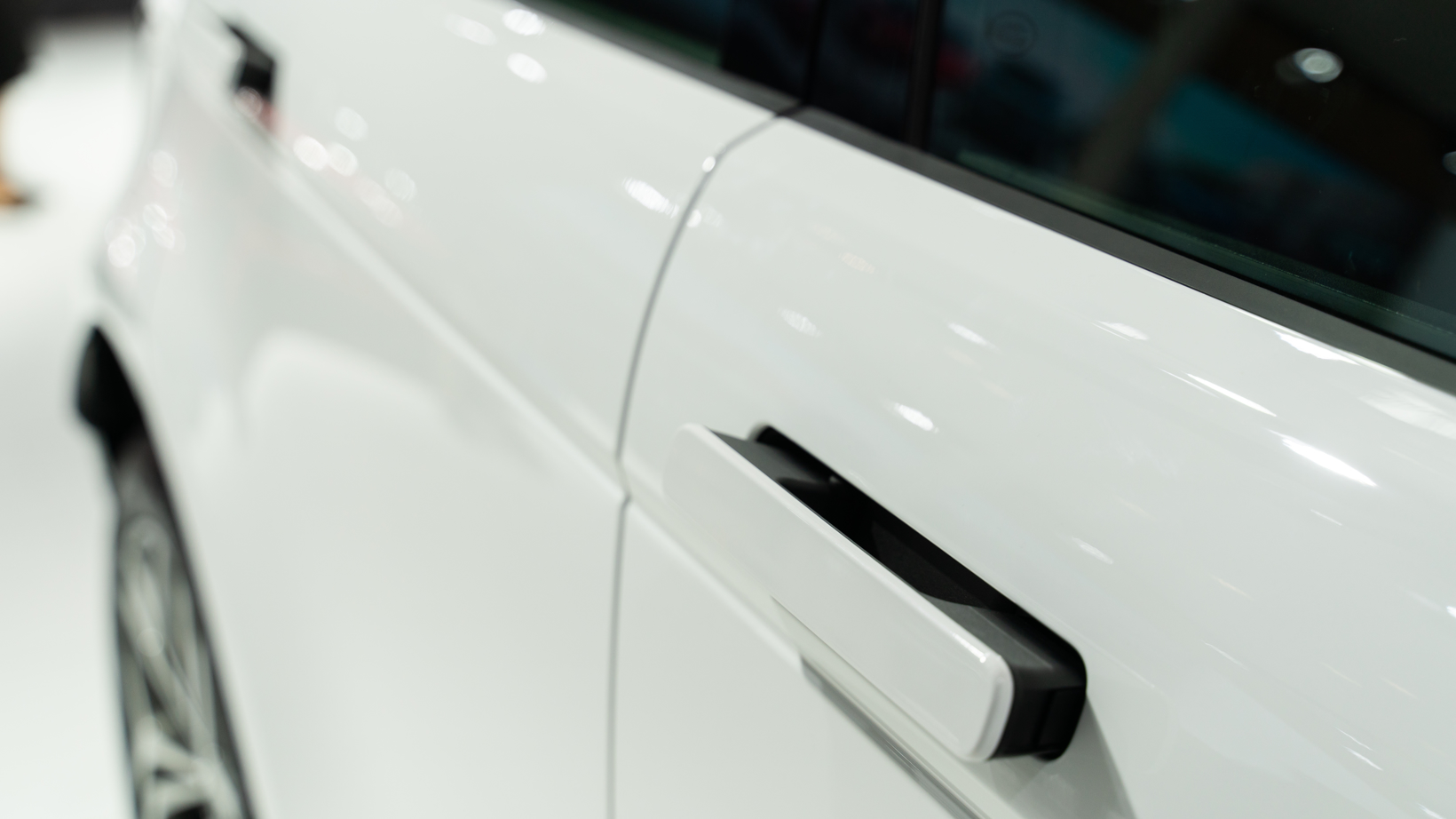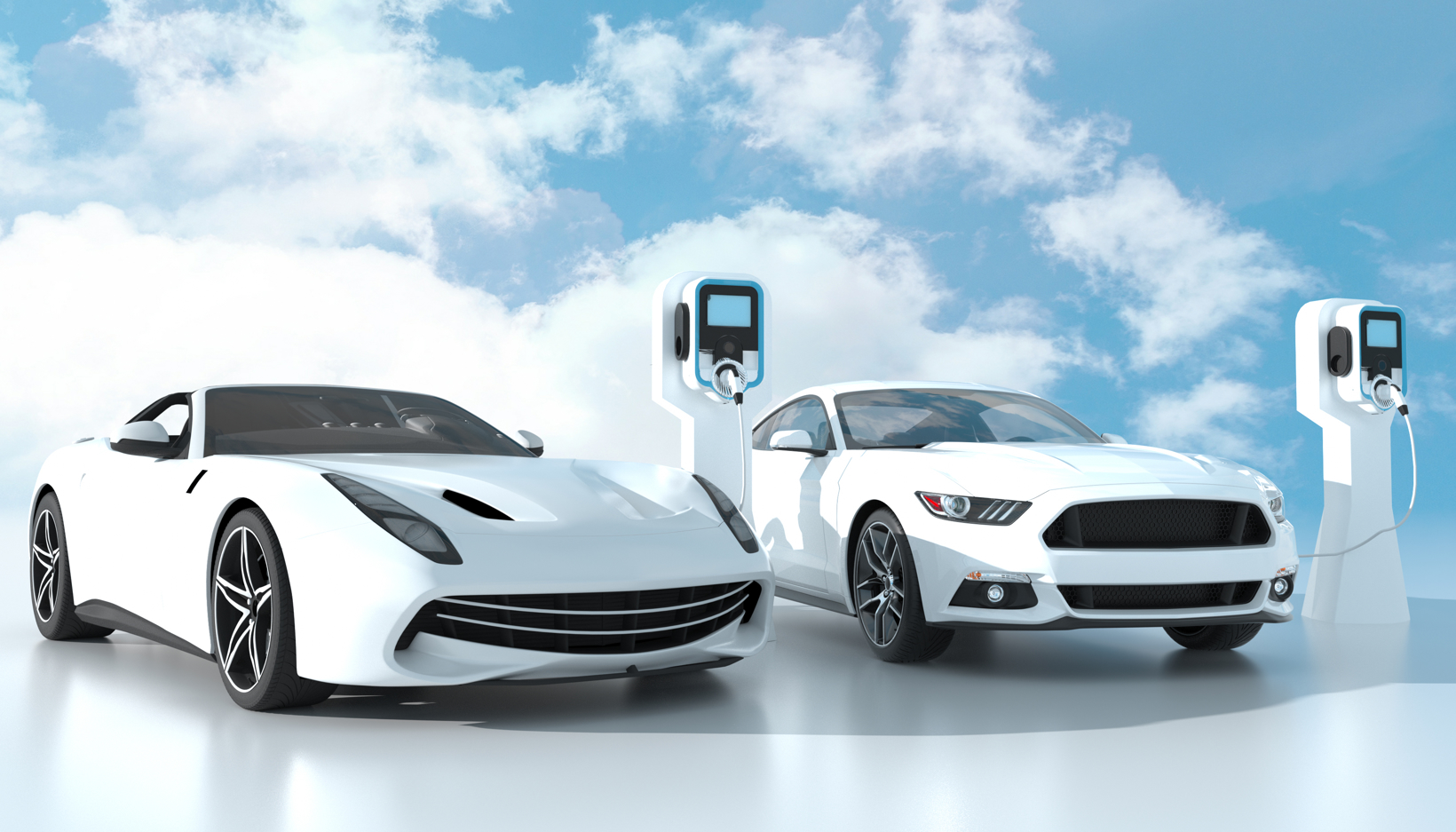Tesla's Retractable Door Handles Given Final Ultimatum
The world has long suffered from hidden door handles in cars! All along, hidden door handles have been marketed with the label of technological innovation, but behind them lie numerous hidden dangers. It is time to return to the essence of safety and provide the industry and consumers with a response.
Recently, Tesla revealed plans to "eliminate" the hidden door handles. Due to pressure from the National Highway Traffic Safety Administration (NHTSA) and other agencies, Tesla's design director Franz von Holzhausen admitted that the company is currently "redesigning the door handle system," with the main goal of making it more intuitive for passengers to operate the doors in "emergency situations."
Coincidentally, regulatory authorities in our country have also taken action regarding hidden door handles. On September 24, the official website of the Ministry of Industry and Information Technology released a draft for public comment titled "Technical Safety Requirements for Automobile Door Handles" (hereinafter referred to as the "Requirements"). This draft seeks public opinion on mandatory national standards for automobile door handles, with the deadline for comments set for November 22.

Image source: Screenshot from the official website of the Ministry of Industry and Information Technology.
It is worth mentioning that the compilation explanation of the "Requirements" clarifies the above content.The main purpose is to address the new technology and safety requirements of electric hidden car door handles, further standardize and enhance the safety of door handles, and strengthen the safety foundation of automobiles.The new national standard aims to guide enterprises in standardizing the design of interior and exterior door handle products, improve the safety performance of door handles, and comprehensively enhance vehicle safety levels.
This also means that the fully concealed door handles commonly equipped on new energy vehicles may be banned, and traditional mechanical door handles are likely to make a comeback. With the rapid development of vehicle electrification and intelligentization, concealed door handles have been widely used due to their aesthetic appeal and strong sense of technology. However, issues with concealed door handles are becoming increasingly apparent, such as insufficient strength, potential safety risks in control logic, difficulty in recognizing operations, failure when power is off, and hand-pinching incidents.
The arrival of the new national standard not only puts an end to hidden door handles but also makes us realize that...Any innovation and breakthrough can only demonstrate greater value on the foundation of safety.
From Trend to Hidden Danger,The Fatal Cost Behind Standard Configuration
On September 24th, the Ministry of Industry and Information Technology issued a "final ultimatum" to the once-symbolic "futuristic" fully hidden door handles. This standard, proposed to be implemented on January 1, 2027, clearly requires that each car door must be equipped with an external handle with a mechanical release function, and the operating space must not be less than 60mm×20mm×25mm. Non-collision side doors must be able to be opened manually after an accident.

Image source: Shetu Network
According to the "Requirements," each car door (excluding the tailgate) shall be equipped with an external door handle that has a mechanical release function. The system design should ensure that when the locking device is in a locked state, in the event of an irreversible restraint device deployment or a power battery thermal event, the non-collision side door can be opened from the outside without the need for tools through the external door handle.
The requirements also specify that each car door (excluding the tailgate) should be equipped with an interior door handle that has a mechanical release function and can unlock and open the door without the use of external tools. If an electric interior door handle is installed, it should also be equipped with a mechanical release interior door handle as an emergency mechanical interior door handle.
Industry insiders analyze that the relevant provisions in the "Requirements" effectively prohibit the design of "fully concealed" exterior car door handles.
Tracing the journey of its rise to popularity, the widespread adoption of hidden door handles can be attributed to Tesla's demonstration effect. In 2012, the Model S combined electronically controlled pop-out handles with smart sensing, quickly becoming an "identity label" for new energy vehicles due to its integrated visual effect and low wind resistance advantages.
Data shows that in April of this year, among the top 100 selling new energy vehicle models in the Chinese automotive market, the adoption rate of hidden door handles was about 60%. It is worth mentioning that not only Tesla, but also various new car manufacturers and traditional automakers have made hidden door handles almost a standard feature in their mid-to-high-end models.
The reason for equipping hidden door handles is straightforward. Besides showcasing the product's sense of technology and futurism, car manufacturers also claim it can reduce the drag coefficient by 0.01, which translates to an increase of over ten kilometers in range.
However, these advantages become increasingly pale in the face of safety risks. Multiple media reports indicate that NHTSA data from the United States shows a significant increase in accident reports due to rescue delays caused by door handle issues since 2020, with most involving hidden designs. In 2021, a new energy vehicle in the U.S. crashed into a tree and caught fire, and the hidden door handle failing to pop out was identified as a key factor delaying the rescue. In China, during an accident involving a certain brand's vehicle in 2023, rescue personnel took 3 minutes to pry open the handle's decorative cover, with the hidden door handle once again being the "culprit."
According to test results from a third-party organization, vehicles equipped with electronic door handles have a success rate of only 67% for door popping open after a side collision, significantly lower than the 98% for traditional mechanical handles. Industry insiders believe that electronic door handles may completely fail in cases of power loss or deformation, leading to extended rescue times and potentially requiring window breaking to enter the vehicle.
In addition to safety, user experience is also a shortcoming of hidden door handles. In daily use, cold regions in the north often suffer from the "harm" of hidden door handles, with cases of doors being difficult to open in cold weather being quite common. Of course, there are also a series of design approaches that do not conform to normal usage habits, making it difficult for passengers or drivers other than the car owner to use or get accustomed to the hidden door handles correctly. Various "anti-human" designs are hard to adapt to.
The head of a car company complained, "Hidden handles are heavy, have poor sealing, and high noise levels. Their effect on reducing wind resistance is almost negligible, but the safety hazard in case of a power outage is fatal."
Start new ,Supply chain
Tesla's "betrayal of its ancestors" decision, along with the arrival of the new national standard, has also initiated the transformation of the automotive industry's door handle sector.

Image source: Shetu Network
The implementation date of the new national standard provides enterprises with a sufficient buffer period. The compilation instructions suggest that the recommended implementation date for this standard is January 1, 2027. For newly applied type-approved models: implementation on January 1, 2027, should meet the requirements of this document except for 4.1.1.3; starting from July 1, 2027, they should meet all the requirements stipulated in this document. For models that have already obtained type approval, starting from July 1, 2028, they should meet all the requirements stipulated in this document.
A comprehensive adjustment has quietly begun from the R&D side to the supply chain.
Even before the policy, many had already been preparing in advance. For example, after the incident, a certain company began to adopt "van-style" hidden door handles for some of its models, retaining physical grips and combining electronic and physical unlocking.
In addition, some car manufacturers have reverted to the most traditional pull-ring door handles. This shows that tradition does not equal obsolescence; this type of door handle is the easiest to use, has the highest recognition, and aligns more closely with the intuitive act of opening a door, meeting the operational habits of the majority of users.
After hidden door handles, semi-hidden designs may become the mainstream direction. According to a certain joint venture automaker, its newly developed model has abandoned the fully hidden scheme in favor of a "touch pop-up + mechanical emergency" structure. When not in use, it is flush with the body, and in the event of a power loss, the door can be unlocked using a hidden lever along the edge of the door. The drag coefficient is only 0.002 higher than that of the fully hidden version, having a negligible impact on range.
A certain domestic brand has incorporated contrasting color elements into its semi-concealed design to enhance the visual texture and avoid a "cheap feel." In addition, it has been reported that Tesla is also redesigning its door handle system, potentially introducing electronic and mechanical redundancy structures to address safety regulations and market feedback.
The differentiation of the supply chain has become apparent. The "Requirements" stipulate that "the mechanical emergency opening function must be retained after power loss/collision," and new clauses regarding anti-pinch, identification, strength, and others have been added. This means that if automakers insist on full concealment, they must add an additional set of mechanical pull cables or external levers, and the technical route will shift from "pure electric control" back to "dual redundancy."
"Most companies' existing technologies can meet the standard requirements; the key is redesign and cost control." Automotive industry expert Zhang Yu (pseudonym) pointed out that automakers need to increase mechanical redundancy design, which will raise R&D and supply chain costs, but in the long run can reduce recall losses.
It is reported that the "Requirements" are prompting companies focused on electric hidden handles to accelerate their transformation. A domestic manufacturer that specializes in micro motors stated, "We have suspended the research and development of fully hidden products and shifted to developing semi-hidden modules with emergency pull rods." In addition, the company has urgently initiated a project for a "motor + cable" hybrid module, compressing the development cycle from the usual 18 months to 9 months, with plans to start SOP in Q2 next year.
The introduction of the new national standard provides new opportunities for traditional mechanical door handle suppliers. Industry analysts have roughly estimated that the transformation of car door handle systems will increase the cost per vehicle by 150-300 RMB. Based on an annual sales volume of 30 million new energy vehicles, the market increment could reach 4.5-9 billion RMB.
The fundamental shift in smart car design logic
The "exit" of hidden door handles is essentially a return of the automotive industry from "form innovation" to "safety essence." This transformation, driven by regulation, is profoundly reshaping the R&D logic of smart cars, with its impact far exceeding the iteration of a single component.

Image source: Shetu Network
From a deeper perspective, the issuance of the standard represents a regulatory redefinition of the "boundaries of innovation." The Ministry of Industry and Information Technology candidly stated in the explanatory notes to the "Requirements" that the motivation for its formulation was specifically due to "obstacles to escape caused by handle failure in collisions and thermal runaway incidents." The document shows that the drafting group consisted of over ten organizations, including China Automotive Technology & Research Center, Geely, and Li Auto. Throughout nine working meetings over the course of a year, they reviewed several typical cases domestically and internationally, ultimately establishing the core principle of "mechanical redundancy as the baseline."
This idea is almost in sync with the regulatory direction in the smart automotive field in recent years, from mandatory requirements for automatic driving data recording to a 5-second alarm for battery thermal runaway warnings. Safety has become a prerequisite for all technological innovations. In other words, automakers can only obtain a market permit after passing the "redundancy exam."
What also needs to be noted is that the industry's perception of the product's "technological sense" is being reconstructed. For example, Volkswagen and Porsche have successively announced that some new models will revert to physical buttons for high-frequency functions such as volume, air conditioning, and hazard lights, and restore rotary controls for air conditioning. Data also shows that the misoperation rate of physical buttons is 70% lower than that of touch controls, indicating that safety has once again become a hard constraint in product design.
"True innovation cannot come at the expense of safety." Zhang Yu believes that the new regulations will compel companies to focus their efforts on research and development that balances "safety and experience." When the new standards are implemented, the industry’s trend of "being cool for the sake of being cool" may come to an end, and "intelligence" will ultimately return to being human-centered.
For consumers, standards bring not only safety guarantees but also the return of choice. After the implementation of the new regulations, a variety of door handle solutions such as "semi-hidden + mechanical emergency" and "traditional upgrade + aesthetic design" will flood the market. Previously, the differences in the location and operation of emergency handles among various car companies were significant, making it difficult for consumers to grasp. However, the new regulations may promote the establishment of unified emergency symbols and operational logic.
In the long run, this revolution in car door handles may serve as a wake-up call for the smart car industry. When the penetration rate of new energy vehicles surpasses 50% and the market transitions from the novelty phase to the popularization phase, users' demands for safety and reliability far exceed those for curiosity-driven innovation. This shift in perception is the most profound value of the national standard for car door handles.
The summary of the world.
Currently, the new national standard is still in the phase of soliciting opinions, and specific details may be adjusted based on industry feedback. However, the direction of "prohibiting fully hidden handles and mandating mechanical redundancy" has been basically determined. After 2027, when fully hidden door handles gradually disappear from the new car market, what we should remember more is that every advancement in the automotive industry must ultimately be measured by human safety.
【Copyright and Disclaimer】The above information is collected and organized by PlastMatch. The copyright belongs to the original author. This article is reprinted for the purpose of providing more information, and it does not imply that PlastMatch endorses the views expressed in the article or guarantees its accuracy. If there are any errors in the source attribution or if your legitimate rights have been infringed, please contact us, and we will promptly correct or remove the content. If other media, websites, or individuals use the aforementioned content, they must clearly indicate the original source and origin of the work and assume legal responsibility on their own.
Most Popular
-

Zf asia-pacific innovation day: Multiple Cutting-Edge Technologies Launch, Leading Intelligent Electric Mobility
-

Mexico officially imposes tariffs on 1,400 chinese products, with rates up to 50%
-

List Released! Mexico Announces 50% Tariff On 1,371 China Product Categories
-

Fire at Sinopec Quanzhou Petrochemical Company: 7 Injured
-

Argentina Terminates Anti-Dumping Duties on Chinese PVC Profiles! Kingfa Technology & Siemens Sign Digital and Low-Carbon Cooperation Agreement






